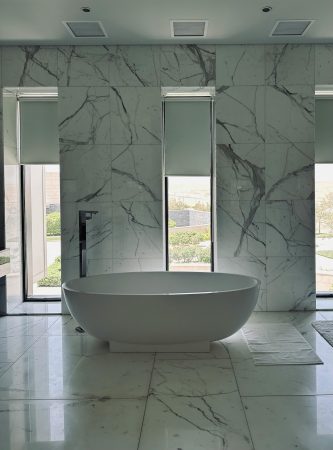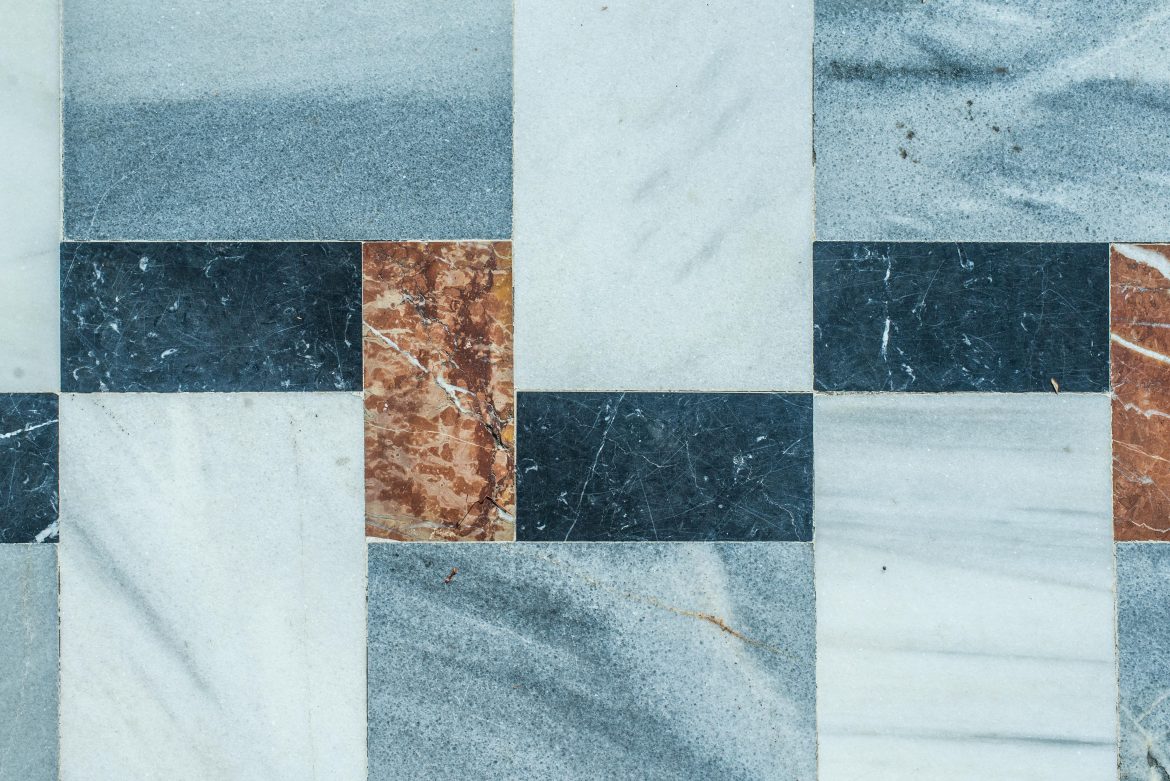Interior design trends come and go, but every now and then, one comes along that feels truly transformative — and this year, it’s all about tile drenching. Set to dominate homes in 2025, tile drenching is being hailed by designers as the standout design statement of the year. While it might sound dramatic, the effect is surprisingly versatile, allowing homeowners to create everything from calming spa-like sanctuaries to high-impact dining spaces.
So what exactly is tile drenching, and why has it become the latest must-have aesthetic?
ALSO SEE: How to dehumidify your home
What is tile drenching?
If you’re familiar with colour drenching, the concept behind tile drenching will feel instantly recognisable. Rather than limiting tiles to a splashback or a single feature wall, tile drenching involves using the same tile across both floors and walls — in some cases, even the ceiling — to fully envelop a space. The result is a visually striking, immersive interior that feels cohesive, elegant, and thoroughly modern.
Although tile drenching has gained particular traction in bathrooms and kitchens, designers are now applying it to hallways, dining rooms, and even living areas to create a seamless, sophisticated look.
Why tile drenching is taking off in 2025
There are several reasons this trend has exploded in popularity. First, it appeals to a growing preference for minimal, uninterrupted surfaces that still offer depth and texture. By removing harsh visual breaks and using a continuous tile design, the eye can move smoothly across a space, which has the added benefit of making smaller rooms feel larger and more open.
Secondly, tile drenching ties into the broader rise of wellness-inspired interiors. Tiles in calming shades such as sage, taupe, and dusty blue lend themselves beautifully to serene bathroom settings, creating tranquil environments that feel both clean and luxurious.
Finally, this trend aligns with the current focus on longevity and durability in home design. Tiles, particularly ceramic or stone-effect finishes, are hardwearing, easy to maintain, and water-resistant, making them a practical choice for busy households.

Pexels
Designers say it’s more versatile than you think
While tile drenching can certainly make a dramatic impact, it’s far from one-note. Designers are experimenting with matt finishes for a more natural, textured effect, as well as patterned or two-tone tiles for added depth. Those after a more understated take might prefer using large-format tiles in soft neutrals for a subtle yet expansive feel.
Rather than sticking strictly to one tile, some are mixing shapes and layouts — such as pairing vertically stacked wall tiles with a herringbone floor — to add visual interest without breaking the continuity. Others are choosing complementary floor tiles in a contrasting pattern or colour to define zones within open-plan areas.
There’s also a shift towards sustainable materials and finishes. Wall panels that mimic tiles have gained popularity as an eco-conscious alternative, especially for those who want to replicate the drenched effect without the heavy lifting or grouting.
Beyond the bathroom: where tile drenching works best
Bathrooms may be the most obvious setting for tile drenching, but its impact can be just as powerful in other areas of the home. In dining rooms, enveloping the space in polished tiles lends a sense of glamour, particularly when paired with metallic finishes and soft furnishings. Entryways and utility rooms also benefit from the practicality and polish of this look, especially in high-traffic households.
Compact spaces, surprisingly, are some of the best candidates. Tile drenching removes visual clutter, making smaller bathrooms and cloakrooms feel more spacious. A monochrome palette, for example, can stretch a room’s proportions, while a bold, saturated colour such as forest green can turn a tiny guest loo into a dramatic design statement.
Lighting matters more than ever
Because tile drenching covers such a large surface area, lighting plays a vital role in shaping the overall feel. Accent lighting — such as concealed LED strips — can highlight textures, create atmosphere, and prevent the space from feeling too clinical. This is especially useful in modern bathrooms, where under-cabinet or recessed lighting softens the harder lines of tiled surfaces.
Is tile drenching here to stay?
Unlike many short-lived trends, tile drenching seems poised for longevity. Its combination of practicality, visual impact, and adaptability makes it a natural fit for homeowners looking to invest in designs that won’t feel dated in a year or two. Whether you opt for stone-effect tiles in neutral tones or experiment with colour and contrast, this is one trend that offers as much substance as it does style.
Tile drenching isn’t just a trend — it’s a bold new way of thinking about interior design.
ALSO SEE:
Featured Image: Pexels

